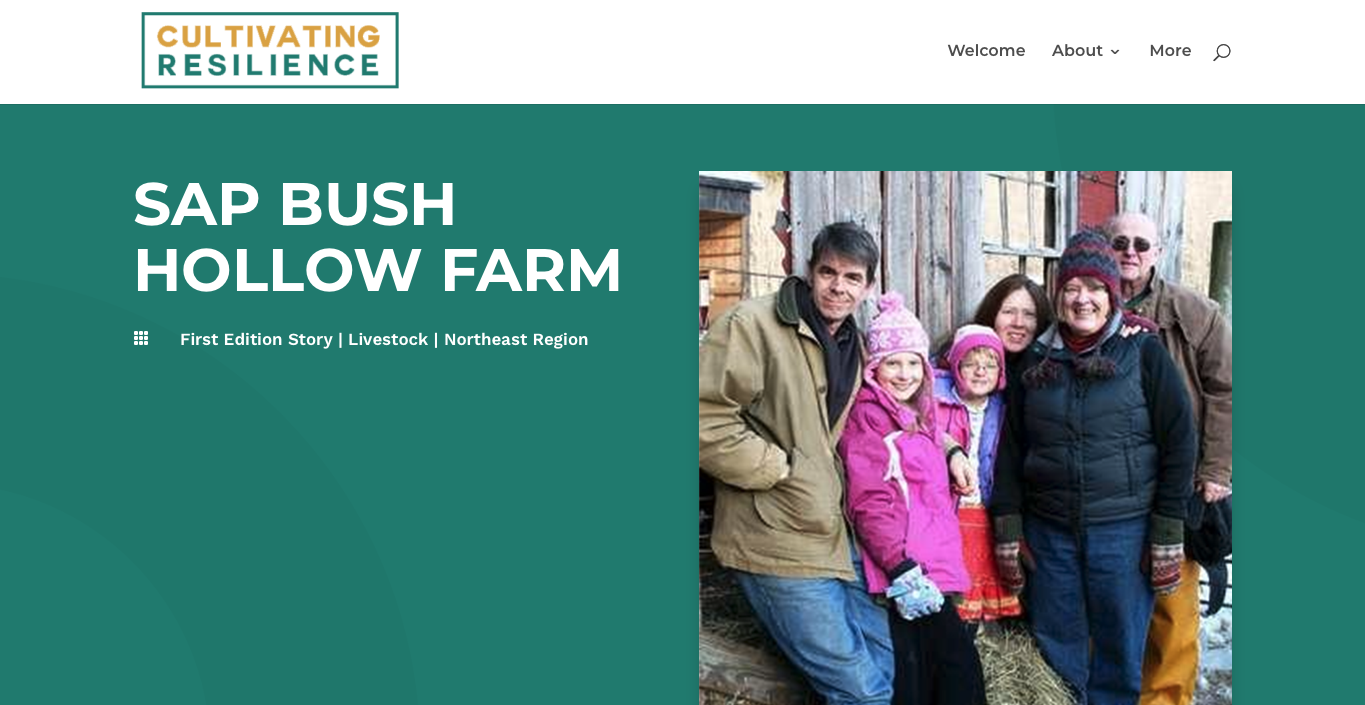Resilient Agriculture Story: Sap Bush Hollow Farm (2013)

Case Study
Author(s): Laura Lengnick
Organization: Cultivating Resilience, LLC
Planning Step: Identify Effective Climate Resilience Strategies
Sap Bush Hollow Farm tells the story of the Hayes and Hooper families’ adaptation to changing weather patterns and extreme weather on their farm in the hills of Schoharie County, New York. The farm produces grass-fed lamb and beef, pastured pork and poultry, all-natural wool fiber, organic honey and all-natural handcrafts on 160 acres of upland pastures near Warnerville, about an hour west of Albany. Over the last decade or so, more variable weather and extremes have created new challenges at Sap Bush Hollow Farm. Jim and Adele have adapted to more dry periods and drought by leasing some additional pastureland to increase their capacity for forage production and they have built ponds to provide water to every paddock on the farm. Stronger and more frequent winds are also challenging farm operations, even though the farm is in a sheltered location, and they have had to reinforce their portable poultry huts with steel bases to withstand higher winds. In 2011, Sap Bush Hollow was right in the path of two back-to-back hurricanes — Irene and Lee — that caused catastrophic flooding in South Central New York. Jim says that the storms were an eye-opening experience for everyone in the community, particularly with respect to how quickly the road system in the area was destroyed. “The damage that those storms caused was very frightening,” Jim recalls. “That really reset our thinking in a lot of ways.”
Relevant Region(s): Central NY | Farm Scale: 160 acres | Farm Type: Pastured Livestock | Markets: Direct
